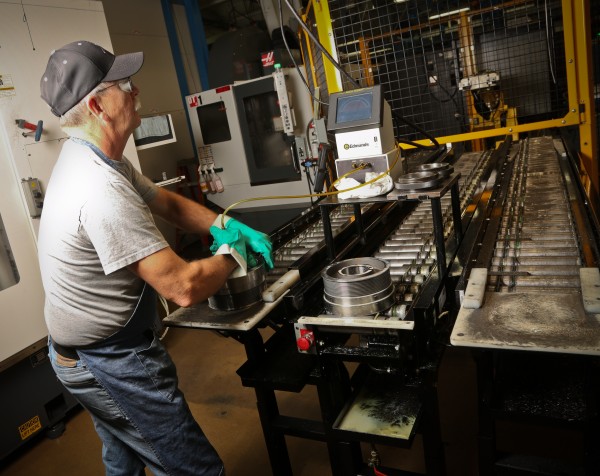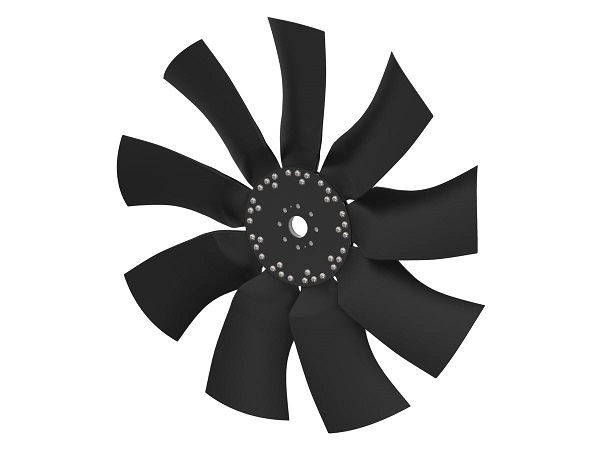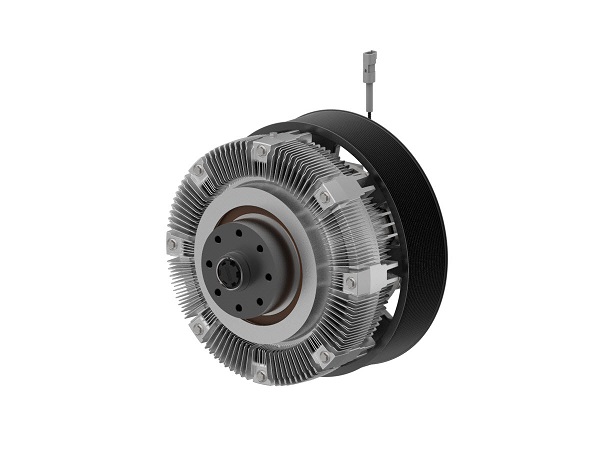
Horton’s headquarters in Roseville, just outside of Minneapolis, Minnesota.
Mining supplier Horton continues to pursue innovation in the off highway truck market through the introduction of two new products earlier this month.
Horton, which provides engine cooling solutions through its product portfolio of fans and fan drives for both the on and off highway markets, showcased the HTEC 1800 fan and the RCV1000 fan drive at the company’s first-ever Media Summit in Roseville, Minnesota, on November 2.
“Horton continues to listen to its customers and focus to delivering the best solutions to meet their needs for demanding applications in the off-highway market,” said Manish Virmani, Horton’s vice president of global market development. “Adding the HTEC 1800 fan and RCV1000 fan to drive to our growing product portfolio offers our customers more industry-leading options when it comes to engine cooling solutions.”
In mining, cost-cutting and productivity have become mantras in this era of lower commodity prices compared to the top of the mining supercycle five years ago. All mining companies are looking for ways to decrease their costs-per-ounce or tonne as they struggle to maintain or grow their market share. Cutting the fuel burn is among the low-hanging fruit that miners can pick.
“The off highway business is where the truck business was in the late ‘70s, early ‘80s. They’re just realizing what a fan and a fan drive will do for them in their operation”: Horton founder Hugh Schilling
Fuel consumption in a mining truck is huge. Among surface-mining costs, the fuel used for on-site haulage can exceed over half of a mine’s total energy costs. Depending on the brand, application, payload and slope grade, a haul truck can consume anywhere from 40 to 60 US gallons of diesel per hour, or more.
Worse, mine operators are finding their fuel costs are rising. Particularly in gold mining, as ore grades decline, companies need to extract more ore to produce the same amount of gold, thereby burning more fuel in the process.
Finding means to cut fuel can have a big impact on miners’ bottom lines. Manufacturers of on-highway trucks discovered decades ago that one way to reduce the use of diesel fuel is to modify the mechanism that cools the truck’s engine components.
Horton built a business around this need, first introducing a fan drive for diesel-powered trucks in 1964. In the 1970s, when concern for fuel savings and noise reduction escalated, the fan drive business saw rapid growth, and Horton opened its Britton, South Dakota manufacturing plant.

Manufacturing fan drives at Horton’s facility in Britton, South Dakota.
By the late 1980s, Horton’s fan drives had become standard equipment for major truck manufacturers such as Peterbilt, Kenworth, Freightliner and International.
Over the past decade, Minnesota-based Horton has worked to expand its line of fans and drive drives to the off highway market, where fuel savings are as important, if not more important, for heavy equipment, as for trucks that roll down highways. Noise reduction is also key in mining and heavy construction, particularly at sites and operations close to urban centres.
“The off highway business is where the truck business was in the late ‘70s, early ‘80s. They’re just realizing what a fan and a fan drive will do for them in their operation,” says Hugh Schilling, Horton’s founder and board chairman.
Schilling made the remarks as part of a company history he presented to a group of editors assembled at Horton’s headquarters in Roseville, just outside of Minneapolis.
“The one thing you hear from everyone, any time you read the truck reports, the mining reports, what’s the number one thing on their list? Fuel cost,” said Schilling, a spry octogenarian who continues to play an active role in the business he founded in 1951.
The World War Two veteran served in the U.S. Air Force as part of a bomber squadron. One evening Schilling won $3,000 in a poker game, money that he used after the war to purchase, with a group of investors, the assets of bankrupt Horton Manufacturing, which had developed a hydraulic clutch to control the speed of air blowers.
For the first 20 years, Horton manufactured clutches and brakes for industrial applications. In 1971, Horton’s fan drive was developed for vehicles.
Horton’s pitch to mining truck and heavy equipment customers? According to CEO Cordell Dietz, an engine’s cooling fan can use up a lot of an engine’s energy if it is not tuned properly.
“If you’re running your fan 100% all the time, that takes fuel. It could take up to 10% of the fuel associated with running a diesel engine,” Dietz said at MINExpo in September.
“The engine doesn’t need that type of cooling 100% of the time. So what we do is make the drive and the fan work together and make sure that that fan is running at the speed necessary to cool off the engine properly, not at 100%.” Fan drives also prevent overcooling, which can happen when too much cold air is being pulled into an engine that is operating in cold climates.
Horton’s viscous fan technology injects lubricating fluid into a working chamber. The more fluid that is injected into the chamber, controlled by an ECU (electronic control unit), the faster the fan will spin. The fan clutches vary the speed at which the fan turns, adjusting to the engine’s cooling needs, resulting in higher engine performance, a lower fuel burn and less noise.
The system reduces maintenance, as the only maintenance required is through the ECU; the fan drives are relatively easy to install or retro-fit.
Horton is a company that thrives on innovation, and one of the latest products the company has brought to market is a fan called HTEC, which stands for Horton Thermoset Engineered Composite.
First introduced by Horton in 2015, HTEC fans are designed for larger off highway equipment applications, such as mining, oil and gas and power generation systems.
They are made from a thermoset engineered composite, which gives them the performance characteristics of metal fans, but with some added benefits. These include: lighter weight compared to metal; the capability to run at high speeds; more efficient due to higher airflow; anti-spark blades; and less bending compared to plastic.
HTEC fans are also compression-molded versus injection-molded, which allows a higher strength-to-weight ratio than nylon, steel or aluminum, and a much higher temperature capability - up to 356°F, the company states.
HTEC 1800
Development of the Horton Thermoset Engineered Composite (HTEC) 1800 fan follows closely behind the HTEC 2500, which was launched June 2015. HTEC fans combine industry-changing material technology with Horton custom engineering capabilities to meet and exceed cooling requirements. Not a thermoplastic, this patent-pending structural thermoset delivers several benefits including increased efficiency, a higher temperature and speed rating, best-in-class durability, corrosion resistance, reduced fuel consumption, significant noise reduction and compatibility with Horton Modulator® Fan Drives for variable-speed control.
Horton’s HTEC 1800 fan has been engineered for rigorous off-highway applications including large mining trucks, remote radiator packages, generator sets and fracking units. The HTEC 1800 fan is available in diameters of 47 to 72 inches, weighs 30 pounds and up, and has a maximum tip speed of 22,000 feet per minute.

RCV1000
Another new offering from Horton is the RCV1000, a variable fan drive that is a smaller version of its RCV2000, previously launched in 2015. The RCV1000 is engineered to use with the HTEC 1800 fan and provides precision cooling for large-bore diesel applications including mining trucks and power generators. Several features enable the RCV1000 to deliver maximum cooling efficiency such as greater heat dissipation, an innovative reservoir, actuator and valve system and an optimized magnetic design that speeds reaction time, increasing modulation and cooling. Featuring a simple wiring configuration, the full-range variable speed control reduces operating noise and lowers fuel costs.
